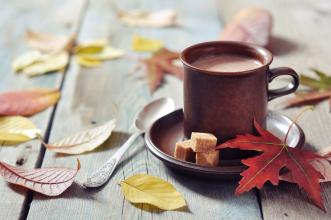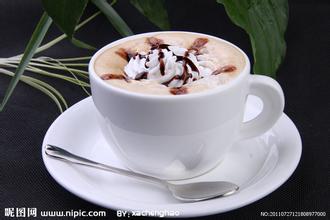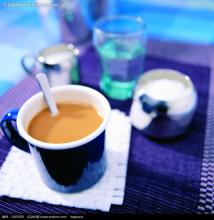Rich fragrant Indonesian Java coffee flavor taste manor boutique coffee introduction
Indonesia is located in the Pacific earthquake belt, where thousands of large and small earthquakes occur every year. In 2006, several strong earthquakes occurred on the island of Java. On May 27, an earthquake measuring 5.9 on the Richter scale struck Yogyakarta and parts of Central Java province, killing more than 6000 people. On July 17, an earthquake measuring 6.8 on the Richter scale struck the Indian Ocean in southern Java and triggered a tsunami, causing heavy casualties. On July 19, another magnitude 6.2 earthquake struck the Sunda Strait between Java and Sumatra.
Historical Editor of Relations with China
After the founding of the Yuan Dynasty, the Yuan Emperor Kublai Khan and Java often sent envoys to each other to maintain friendship. [1] later, the King of Java stabbed Meng Youcheng, the envoy of the Yuan Dynasty, which Kublai Khan thought was a great insult to the Dayuan Empire. So he decided to send troops to invade Java in 1292. By the 29th year of Yuan (1292), Kublai Khan appointed Shi Bi as commander-in-chief, Taiqing of Quanzhou was also lost, and Youcheng of Fujian Province was happy to be deputy commander, leading 20,000 troops and a thousand warships to cross the sea to attack Java. When the army of the Yuan Dynasty arrived in Sumatra, they surrendered the countries on the island. At that time, Java had a bad relationship with its neighbor GE Lang, and King Hazengdana of Java was killed by King Hazhige Gadang. Tuhan, the son-in-law of the King of Java, failed to attack Hadang, but he hoped that the Yuan army would help him. After the Yuan army helped him defeat GE Lang, Tuhan Bisha asked to return home. Said to replace the official table and prepare to pay tribute to the Yuan Dynasty treasures. Shi Bi and also black lost agreed, and sent Wan Hudan and Ganzhou not to lead troops to escort him. On the way, Tuhan would rebel against the Yuan Dynasty, kill the generals of the Yuan army who escorted him, and lead his army to attack the Yuan army, which was defeated and returned.
Although there was not much result in the march of the Yuan Dynasty into Java, it made Java afraid of the armies of the Yuan Dynasty. Coupled with the fact that a large number of southerners of the Yuan Dynasty of China went south to Southeast Asia to carry out ocean trade, the Southern Navy of the Yuan Dynasty of China often patrolled Borneo (Kalimantan Island) in the South China Sea. Java took the initiative to send tribute to the Yuan Dynasty of China, Java was a vassal state of China, and there were close official and people exchanges between the two countries. After Yuan Shizu, Java sent envoys to Gongfan more than ten times: the first year of Yuan Zhen (1295), the first year of Dade (1297), two and three years, Yanyou seven years (1320), to Ye three years (1323), Taiding two years (1325), three years, four years, to the third year of Shun (1332), and Emperor Yuanshun to the twenty-third year of Yuan Dynasty (1363).
History editor
Java is also famous for its Java ape-man. Homo erectus arrived in Java about 1 million B.C., and fossils of Homo erectus were found near the Brantas River in eastern Java. 2 million years ago, abundant rainfall on the Sunda and Digul plateaus allowed a large number of tropical plants to flourish, providing the conditions for the emergence of many prehistoric cultures.
Hindu and Buddhist kingdoms
Javanese culture and language have been greatly influenced by the language and culture of the South Asian subcontinent, and many historical sites have proved this point, such as Borobudur, the site of Buddhist temples, and Branban South Hindu Temple (Prambanan).
At that time, Java coffee sold to Europe was a very special kind of coffee. At that time, it was shipped to Europe and the United States by sailboat, and the distance was long and the speed was slow, so it took a lot of time to transport. In this case, the coffee seems to have undergone a special fermentation and has a very unique taste.
Later, when the ship replaced the sailboat, due to the shortened delivery time, people drank relatively fresh coffee beans. But people who are used to drinking Chen beans are not used to the fresh taste, so they desperately pursue old Java coffee, so that the Indonesian government and some businessmen deliberately store fresh beans in warehouses for one or two years and then sell them to consumers. In fact, compared with fresh beans, the acidity of aged Java beans is close to zero, but the flavor is more intense. Because of the long storage time, the increase in cost and the limited quantity, Java has always been a hot item in the coffee market. In the 1880s, 0 merchants deliberately tampered with some fresh Guatemalan or Venezuelan beans to imitate aged Java for high prices. It is intolerable that 0 merchants dye coffee beans to make them look more like old Java, but there is no doubt that the dyed chemicals are certainly toxic.
Java produces only a small amount of Arabica beans, most of which were imported from Africa after the rust disaster. This coffee has a strong bitter taste after roasting, but its aroma is extremely light. Although it has low acidity and delicate taste, it is rarely used for direct drinking. It is often used to mix mixed coffee, or to make instant coffee in Asian countries that produce coffee. Indonesia is a very noteworthy one. Indonesia is an island country in the Indian Ocean, the islands are distributed on both sides of the equatorial line, of which three islands: Java, Sumatra and Sulawesi produce the world's important coffee. In the mid-17th century, the Dutch brought coffee trees to Ceylon (Sri Lanka) and Java, Indonesia. In the 18th century, Indonesia became a major producer of coffee, and almost all of its high-quality Arabica coffee was supplied to Europe. But by the 19th century, coffee rust, which appeared in Ceylon in 1869, also affected Indonesia. By 1877, most of the coffee fields on the Indonesian islands had been damaged by rust, and the Dutch had to import other coffee varieties from Africa, namely Romsda coffee. It is more resistant to diseases and insect pests, but its quality is inferior. About 90 per cent of Indonesian coffee is Romda beans, about 6.8 million bags a year, and less than 10 per cent of beans are Arabica coffee.
Coffee produced in Indonesia generally does not have the name "Indonesia", but directly bears the name of the island, such as Java, Sumatra and so on.
Java Coffee-Culture
Java coffee beans are famous for their early Java coffee, which refers to Arabica coffee formerly grown on the island of Java. It has a strong aroma, low acidity, taste lubrication, mixed with mocha coffee, the "Java mocha mixed coffee" was once popular and became synonymous with top coffee, and its reputation spread far among the Asian coffee-producing countries. Indonesia is a very noteworthy one. Indonesia is an island country in the Indian Ocean, the islands are distributed on both sides of the equatorial line, of which three islands: Java, Sumatra and Sulawesi produce the world's important coffee. In the mid-17th century, the Dutch brought coffee trees to Ceylon (Sri Lanka) and Java, Indonesia. In the 18th century, Indonesia became a major producer of coffee, and almost all of its high-quality Arabica coffee was supplied to Europe. But by the 19th century, coffee rust, which appeared in Ceylon in 1869, also affected Indonesia. By 1877, most of the coffee fields on the Indonesian islands had been damaged by rust, and the Dutch had to import other coffee varieties from Africa, namely Romsda coffee. It is more resistant to diseases and insect pests, but its quality is inferior. About 90 per cent of Indonesian coffee is Romda beans, about 6.8 million bags a year, and less than 10 per cent of beans are Arabica coffee.
Coffee produced in Indonesia generally does not have the name "Indonesia", but directly bears the name of the island, such as Java, Sumatra and so on.
Java Coffee-Culture
Java coffee beans are famous for their early Java coffee, which refers to Arabica coffee formerly grown on the island of Java. It has a strong aroma, low acidity and lubricated taste. When mixed with mocha coffee, the "Java mocha mixed coffee" was once popular and became synonymous with top coffee.

Important Notice :
前街咖啡 FrontStreet Coffee has moved to new addredd:
FrontStreet Coffee Address: 315,Donghua East Road,GuangZhou
Tel:020 38364473
- Prev

Introduction to the characteristics of the taste manor of Costa Rican boutique coffee
Costa Rica's economy, mainly tourism, agriculture and exports of electronic components, has grown rapidly since the recession in 1997. Costa Rica is located in the strip of Central America and in the center of the Americas. It has direct access to Eurasia and has easy access to the American market.
- Next

Introduction to the characteristics of the manor producing area of pure and full-bodied Guatemalan coffee boutique coffee bean flavor
The Patriotic Party: the ruling party. Retired General Otto Perez founded the party on December 20, 2001 and served as the party's de facto leader. Originally a member of the ruling coalition of the Berhe government, he withdrew in June 2004 due to political differences. General Secretary Rosanna Baldetti. [16] National Union of Hope: opposition. After the split of the New National Union in 2001, former President Colom (originally belonging to Guatemala)
Related
- Detailed explanation of Jadeite planting Land in Panamanian Jadeite Manor introduction to the grading system of Jadeite competitive bidding, Red bid, Green bid and Rose Summer
- Story of Coffee planting in Brenka region of Costa Rica Stonehenge Manor anaerobic heavy honey treatment of flavor mouth
- What's on the barrel of Blue Mountain Coffee beans?
- Can American coffee also pull flowers? How to use hot American style to pull out a good-looking pattern?
- Can you make a cold extract with coffee beans? What is the right proportion for cold-extracted coffee formula?
- Indonesian PWN Gold Mandrine Coffee Origin Features Flavor How to Chong? Mandolin coffee is American.
- A brief introduction to the flavor characteristics of Brazilian yellow bourbon coffee beans
- What is the effect of different water quality on the flavor of cold-extracted coffee? What kind of water is best for brewing coffee?
- Why do you think of Rose Summer whenever you mention Panamanian coffee?
- Introduction to the characteristics of authentic blue mountain coffee bean producing areas? What is the CIB Coffee Authority in Jamaica?

